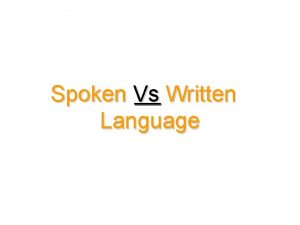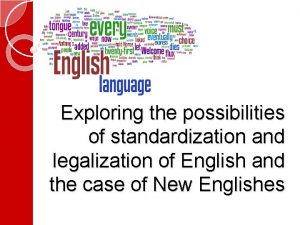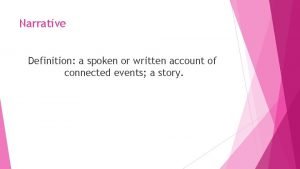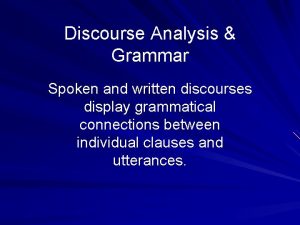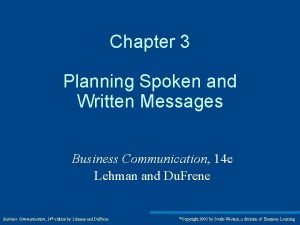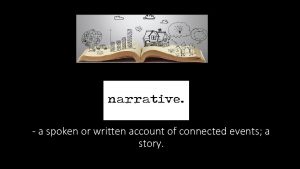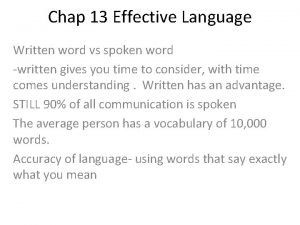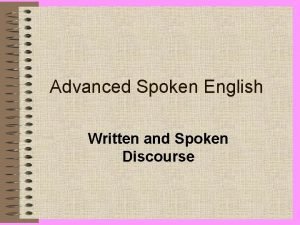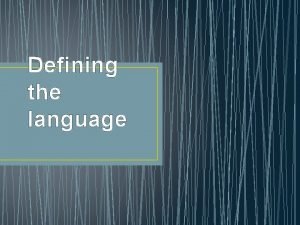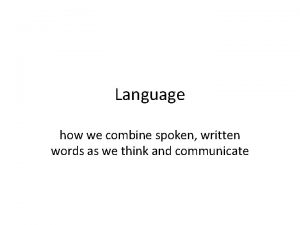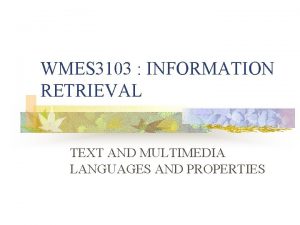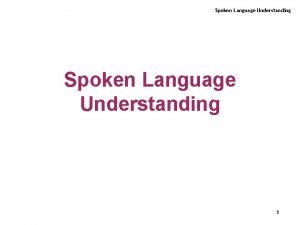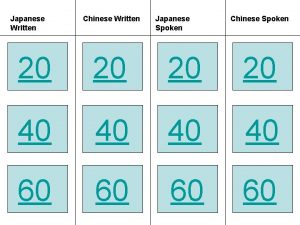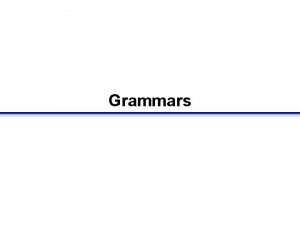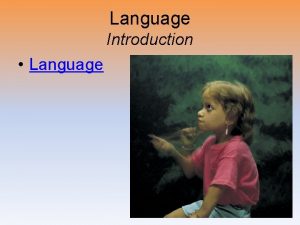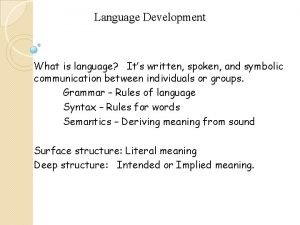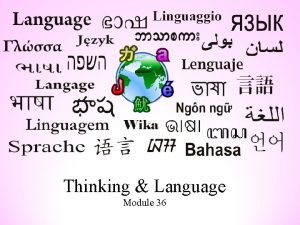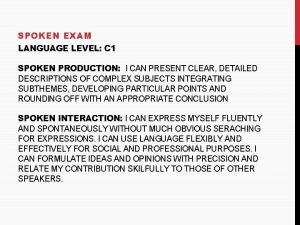Spoken Vs Written Language Introduction Languages are first















- Slides: 15

Spoken Vs Written Language

Introduction Languages are first spoken, then written, and then understood

Aspects of written and spoken language Written Spoken Planned Organized Transactional Unplanned Less structured Interactive

Characteristics of Spoken Language • • Repeating first draft status vocabulary grammar intonation Variation in speed Loudness or quietness • Gestures - body language • Intonation • Stress • Rhythm • Pausing and phrasing

Characteristics of Written Language • Final draft status • Density of content • Grammar • Neutrality of social roles • Punctuation

Uniquely Written Vocabulary

Which comes first: speech or writing? • Speech comes before writing, historically. • Many languages lack a written form. • Many individuals cannot use written language. • Children automatically learn to speak, but have to be taught how to read.

Main Differences Sounds VS letters Vocabulary & Sentences Permanency & Redundancy Strategies Formality & Function interaction Between listener and speaker

1 -Formality Examples: A written note might say, "Would you like to go out to lunch? ” The person who would write that note, might alternatively say, in person, "You wanna go out for lunch? "

2 -Grammatically • more verb based phrases (e. g. having treatment (W), being treated (S), hospital care (W), go to hospital (S)) • fewer complex words and phrases (S)

3 -Vocabulary & Sentences • Oral communication uses words with fewer syllables than the written language. • Written English consists of neat, correct sentences. • Speech usually consists of idea units.

Examples • because • kuz • "I don't wanna go to the party, kuz it sounds boring. " • • bet you • betcha • "I betcha can't eat ten hot dogs!" • • could have + consonant • kuda • got you • gotcha • "I gotcha that candy bar you asked for. " • • has to • hasta • "He hasta know how much he means to me. " • • have to • hafta • "I hafta clean the house before I go out. "

4 - Pronunciation Written: I want to go to the store Spoken : I wanna go duh the store If you doubt that "to" becomes "duh"

Sounds patterns in spoken We write more slowly than we speak Once the utterance is spelled, there's no way to take it back and it dies in the wind. Unlike the written form, it’s documented and can be shifted In Spoken • You must know the sound system of the language • You must also know how the sounds change in fast speech. • The English sound system varies. In WRITTEN • we replace the pauses, intonation and the hesitation that shown in speeches with Punctuation (. , ; : -) in writing. • Accent spelling • Dialect vocabulary

Finally … Redundancy Repetition is built into language itself Necessary for effective COMMUNICATION
 Mikael ferm
Mikael ferm Characteristics of spoken and written language
Characteristics of spoken and written language Languages spoken in monaco
Languages spoken in monaco Languages spoken in india
Languages spoken in india Languages spoken in africa
Languages spoken in africa Spoken or written account of connected events
Spoken or written account of connected events Written and spoken discourse
Written and spoken discourse This can be spoken and written messages
This can be spoken and written messages A spoken or written account of connected events a story
A spoken or written account of connected events a story Written word vs spoken word
Written word vs spoken word Written discourse markers
Written discourse markers Language system definition
Language system definition Art of combining spoken and written words
Art of combining spoken and written words The gap between written and spoken english
The gap between written and spoken english Asian languages written
Asian languages written Multimedia information retrieval in irs
Multimedia information retrieval in irs

